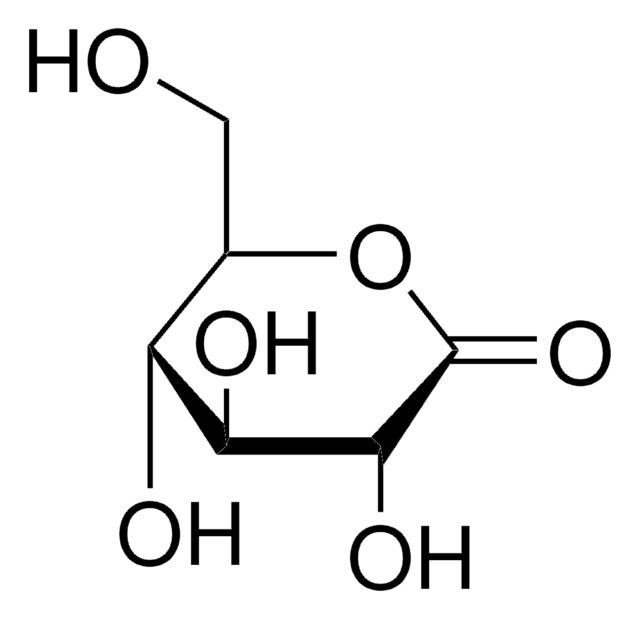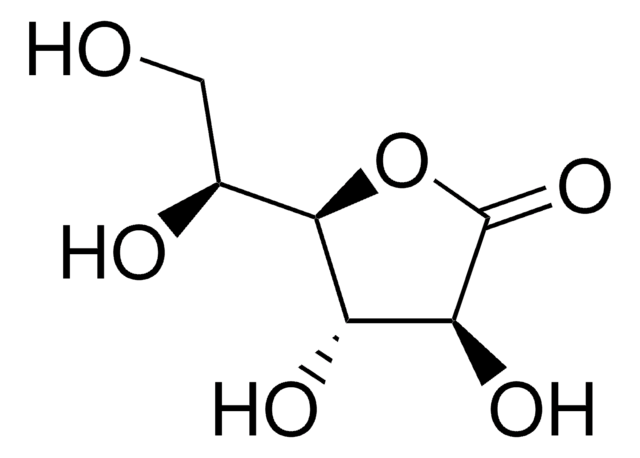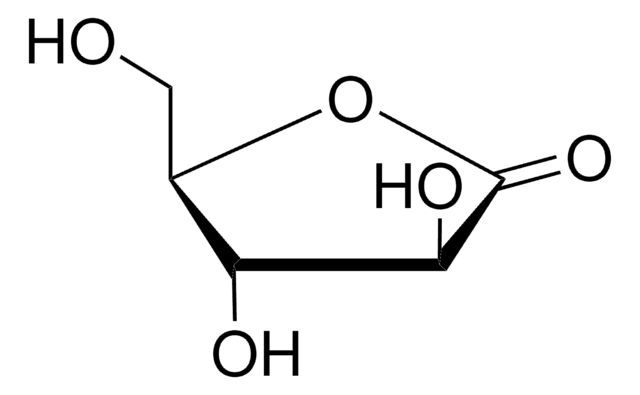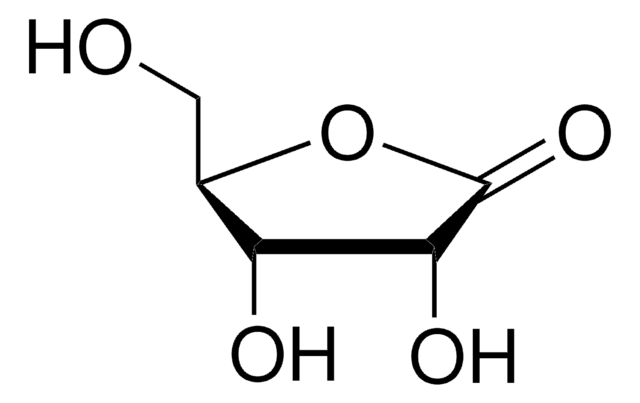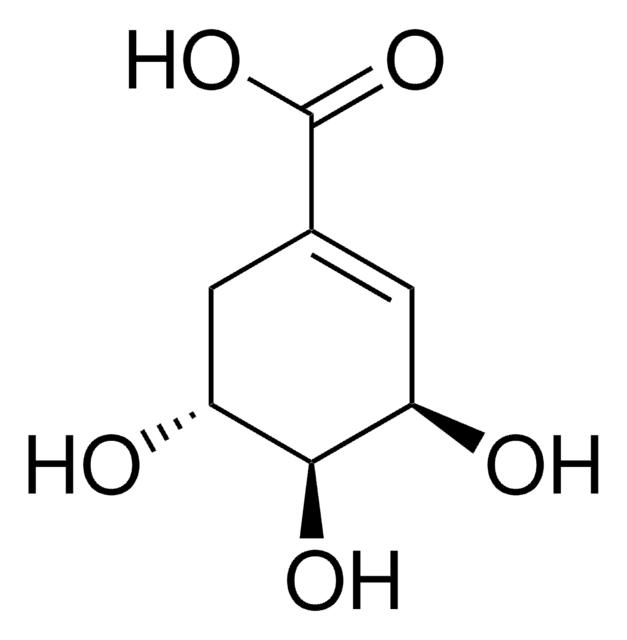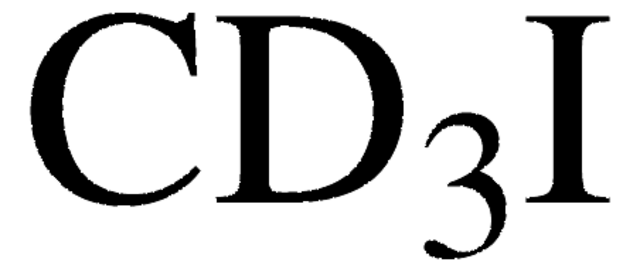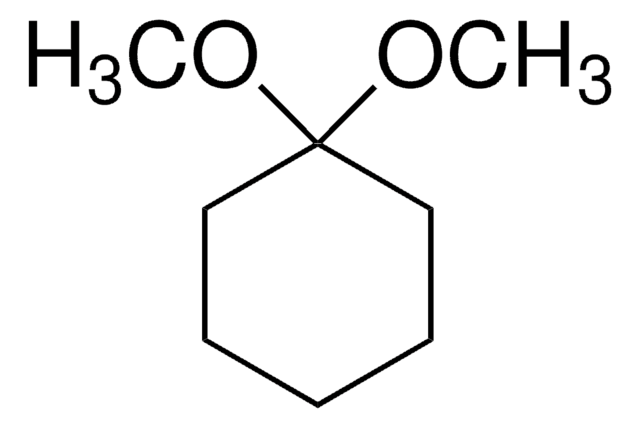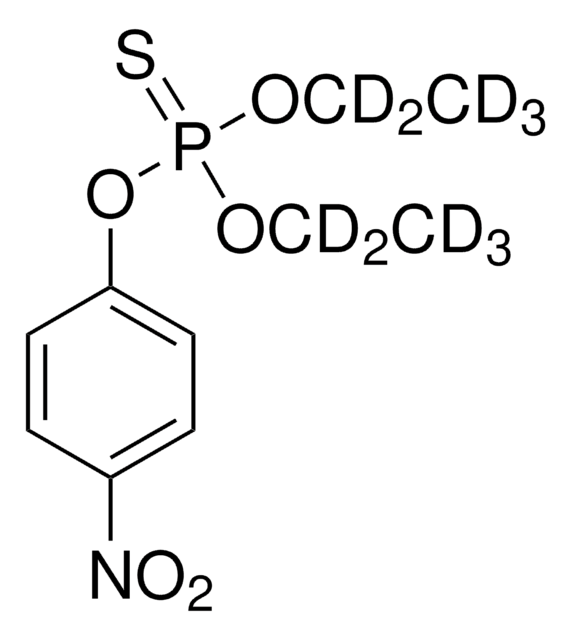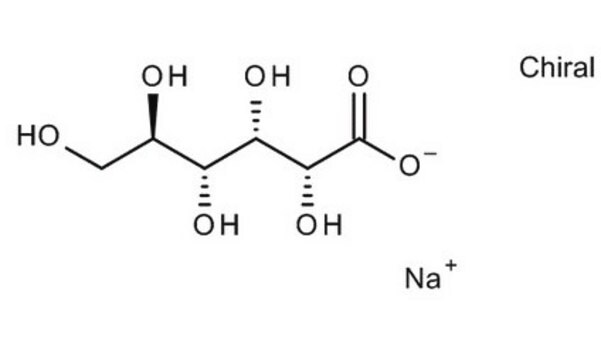Alle Fotos(1)
Wichtige Dokumente
310301
L-Gulonsäure-γ-lacton
95%
Synonym(e):
L-(+)-Gulono-1,4-lacton
Anmeldenzur Ansicht organisationsspezifischer und vertraglich vereinbarter Preise
Alle Fotos(1)
About This Item
Empirische Formel (Hill-System):
C6H10O6
CAS-Nummer:
Molekulargewicht:
178.14
Beilstein:
83002
MDL-Nummer:
UNSPSC-Code:
12352106
PubChem Substanz-ID:
NACRES:
NA.22
Empfohlene Produkte
Qualitätsniveau
Assay
95%
Form
solid
Optische Aktivität
[α]19/D +55°, c = 4 in H2O
mp (Schmelzpunkt)
187-190 °C (lit.)
Lagertemp.
2-8°C
SMILES String
OC[C@H](O)[C@H]1OC(=O)[C@@H](O)[C@H]1O
InChI
1S/C6H10O6/c7-1-2(8)5-3(9)4(10)6(11)12-5/h2-5,7-10H,1H2/t2-,3+,4-,5+/m0/s1
InChIKey
SXZYCXMUPBBULW-SKNVOMKLSA-N
Anwendung
- Development and validation of an analysis method: Discusses the use of L-gulonic acid γ-lactone as a matrix effect inhibitor in the validation of a method for pesticide residues by gas chromatography–tandem mass spectrometry (Saegusa, Nomura, Takao, Hamaguchi, 2021).
Lagerklassenschlüssel
11 - Combustible Solids
WGK
WGK 3
Flammpunkt (°F)
Not applicable
Flammpunkt (°C)
Not applicable
Persönliche Schutzausrüstung
Eyeshields, Gloves, type N95 (US)
Hier finden Sie alle aktuellen Versionen:
Besitzen Sie dieses Produkt bereits?
In der Dokumentenbibliothek finden Sie die Dokumentation zu den Produkten, die Sie kürzlich erworben haben.
Kunden haben sich ebenfalls angesehen
Beata A Wolucka et al.
The FEBS journal, 273(19), 4435-4445 (2006-09-08)
The last step of the biosynthesis of L-ascorbic acid (vitamin C) in plants and animals is catalyzed by L-gulono-1,4-lactone oxidoreductases, which use both L-gulono-1,4-lactone and L-galactono-1,4-lactone as substrates. L-gulono-1,4-lactone oxidase is missing in scurvy-prone, vitamin C-deficient animals, such as humans
Marjan Jeselnik et al.
Organic letters, 5(15), 2651-2653 (2003-07-19)
[reaction: see text] A new synthesis of L-noviose (11), a sugar moiety of novobiocin, is presented. D-Gulonolactone was initially converted in a few steps to the key ester derivative 7 [1-O-benzyl methyl 2,3-O-(1-methylethylidene)-alpha-L-lyxofuranosiduronate]. An appropriate selection of protecting groups enabled
G W Fleet et al.
Carbohydrate research, 205, 269-282 (1990-09-19)
The synthesis of the enantiomers of 6-epicastanospermine and of 1,6-diepicastanospermine from the enantiomeric gulonolactones is reported and the structure of the former is established as (1S,6R,7R,8R,8aR)-1,6,7,8-tetrahydroxyoctahydroindolizine. The inhibitory activities of the diastereomers against the amyloglucosidase-catalysed hydrolysis of p-nitrophenyl alpha-D-glucopyranoside were
F Puskás et al.
FEBS letters, 430(3), 293-296 (1998-08-04)
The orientation of gulonolactone oxidase activity was investigated in rat liver microsomes. Ascorbate formation upon gulonolactone addition resulted in higher intravesicular than extravesicular ascorbate concentrations in native microsomal vesicles. The intraluminal ascorbate accumulation could be prevented or the accumulated ascorbate
A Krasnov et al.
Genetic analysis : biomolecular engineering, 15(3-5), 115-119 (1999-12-22)
The reviewed studies addressed the possibility of using gene transfer for correction of L-ascorbic acid biosynthesis and carbohydrate utilization in rainbow trout. Analyses of enzymatic activities in the L-AAB pathway indicated that reasons for the lack of L-AA production can
Unser Team von Wissenschaftlern verfügt über Erfahrung in allen Forschungsbereichen einschließlich Life Science, Materialwissenschaften, chemischer Synthese, Chromatographie, Analytik und vielen mehr..
Setzen Sie sich mit dem technischen Dienst in Verbindung.